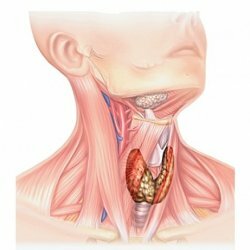Kidney Cancer: First Symptoms, Stages, Treatment, Forecasts
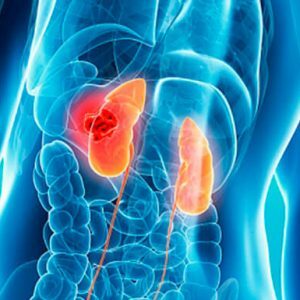 Kidney cancer is a serious pathology, which is the 10th most common cancer among all.In most cases, the tumor is formed from malignant modified cells of the epithelium of the renal pelvis or proximal tubules of nephrons.Every year on the planet, up to a quarter of a million new cases are diagnosed.Most often, this disease affects residents of large cities, which is associated with an unfavorable environmental situation in megacities.In women, the cancer of the kidney is much less common than in men.
Kidney cancer is a serious pathology, which is the 10th most common cancer among all.In most cases, the tumor is formed from malignant modified cells of the epithelium of the renal pelvis or proximal tubules of nephrons.Every year on the planet, up to a quarter of a million new cases are diagnosed.Most often, this disease affects residents of large cities, which is associated with an unfavorable environmental situation in megacities.In women, the cancer of the kidney is much less common than in men.
Unfortunately, it is often possible to diagnose this disease already at a fairly neglected stage.
Table of Contents: Reasons for developing kidney cancer Classification of kidney cancer Stages of kidney cancer Diagnosis of kidney cancer First signs of kidney cancer Complications of kidney cancer Treatment of kidney cancer Prognosis for kidney cancer How to prevent kidney cancer?Reasons for developing kidney cancer
Main causes and factors that trigger tumor development:
- family predisposition;
- age( more often people aged 50-60 years);
- sex( in men, kidney cancer is detected 2 times more often);
- arterial hypertension( including diagnosed hypertension);
- smoking( in individuals with nicotine dependence, the risk is doubled);
- diabetes mellitus;
- injury( kidney damage);
- long-term use of certain pharmacological agents;
- occupational hazards( work with substances-carcinogens);
- radiation;
- disease of the viral etiology.
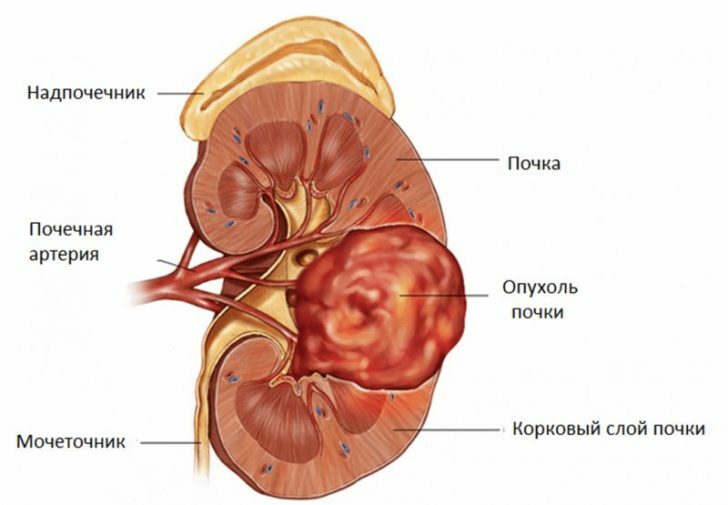
Classification of kidney cancer
On the basis of cytogenetic and morphological signs, it is customary to distinguish such types of kidney cancer:
- typical( clear cell);
- is a chromophobic;
- is chromophilic;
- cancer of collecting tubes;
- unclassified kidney cancer.

In 80% of cases a clear-cell variety is detected.In pathologically altered cells, during the cytogenetic study, the pathology of the third pair of chromosomes is determined.
From 7 to 14% of tumors belong to the papillary chromophilic type.The patient reveals such genetic disorders as loss of the sexual Y-chromosome( which determines the male sex) and trisomy for 7 and 17 pairs.
Chromophobic cancer is detected in 4-5% of patients with kidney cancer;The tumor develops from cells of the cortical layer of tubules.
Lesion of collecting tubes is more typical for young patients.It accounts for 1-2% of diagnosed cases of kidney cancer.
Uncategorized kidney cancer accounts for between 2 and 5%.
Kidney cancer stages
According to the international classification of TNM, in which T is a tumor, N-lymph nodes, and M are secondary foci( metastasis), four stages are considered:
- Stage I -( T1, N0,M0).The size of pathological formation is not more than 4 cm, it does not protrude beyond the capsule.Lymph nodes are not affected, there is no metastasis.
- II stage -( T2, N0, M0).The growth is localized within the affected kidney, but the size is more than 7 cm. No metastasis and lesions of the lymph nodes are detected.
- III -( T1-3, N0-1, M0).The size of the neoplasm varies from 4 to 7 cm. It is possible that sprouting in nearby tissues( including blood vessels).Metastasis is a single, in a regional lymph node.There are no distant secondary foci.
- IV -( T1-4, N0-1, M0-1).The tumor extends beyond the fascia.In the nearby lymph nodes, more than one metastasis is detected.There are also distant foci.
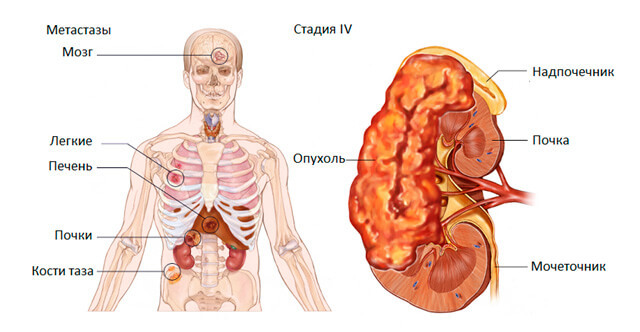
Diagnosis of kidney cancer
First of all, the physician collects a detailed anamnesis and conducts a general examination involving palpation.It is important to find out when the patient has the first symptoms, and what is the nature of the complaints.It is necessary to identify the presence of predisposing factors and to establish whether there was kidney cancer in blood relatives.
The basic method of hardware diagnostics is ultrasound scanning of the kidney area.Ultrasound allows you to determine the localization, size and structure of the tumor.In the course of this study, it is possible to detect the presence or absence of both regional secondary foci and distant metastases.

If the doctor has good reason to suspect a kidney cancer, the patient is referred to the excretory contrast urography of .The diagnostic procedure involves the intravenous introduction of an X-ray contrast compound that penetrates the blood vessels into the vessels of the kidneys.After a short period of time, organ x-ray is performed.The technique serves for the study of ureters and excretory function of the kidneys.
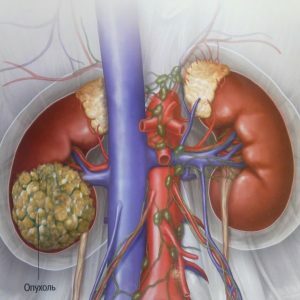 Renal angiography of requires the insertion of a contrast agent into the aorta above the renal artery branch.Radiography in this case helps visualize a malignant tumor.
Renal angiography of requires the insertion of a contrast agent into the aorta above the renal artery branch.Radiography in this case helps visualize a malignant tumor.
The type of tumor allows you to refine the biopsy.Puncture is performed under local anesthesia.The tissue fragment is sent for histology to accurately determine the type of kidney cancer.
Important: biopsy can trigger the spread of pathologically altered cells in the puncture area, as well as the development of bleeding.In this regard, this study is not always carried out, but only in cases where the probability of a benign tumor is high.
The most informative methods are CT( computed tomography) and MRI( magnetic resonance imaging).With the help of layered study of tissues, it is possible to clarify the localization and the degree of growth of the neoplasm.
In addition, blood and urine tests of the patient are examined.When detecting a tumor in the region of the renal pelvis, endoscopy is necessary with the sampling of the tissue sample.
First signs of kidney cancer
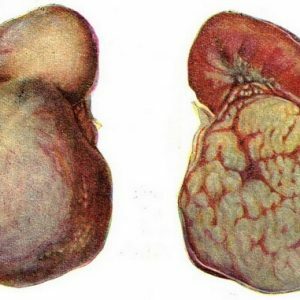 Important: for the early stages is characterized by an asymptomatic course. One of the earliest manifestations of kidney cancer may be pain in the process of urination and kidney colic.
Important: for the early stages is characterized by an asymptomatic course. One of the earliest manifestations of kidney cancer may be pain in the process of urination and kidney colic.
Since the retroperitoneal space is difficult to palpate, often the first clinical signs are detected in the late stages, when the neoplasm already has considerable dimensions.
The most important signs of kidney cancer:
- pain syndrome( occurs when sprouting into nearby tissues or when the ureter is blocked);
- hematuria( blood and blood clots in urine);
- palpable pathological formation in the lumbar region;
- increased blood pressure( the cause of hypertension is compression of the ureter or major vessels, as well as the production of renin by a tumor);
- hyperhidrosis( increased sweating);
- swelling of the feet;
- impaired functional activity of the liver( hepatic insufficiency);
- febrile reaction;
- varicocele( varicose veins of the spermatic cord is a consequence of obturation or compression of the tumor in the inferior vena cava).

Important: The dull pain suggests the expansion of the capsule, and the sharp one often indicates bleeding in the area of the renal pelvis.
Nonspecific clinical signs:
- anemia( anemia);
- general weakness and fatigue;
- loss of appetite;
- weight loss or cachexia( malnutrition).
These symptoms are common to all types of cancer.
Note: is one of the specific characteristics of kidney cancer that the tumor often leads to an increase in the secretion of a number of biologically active compounds( including hormones and vitamin D).
Symptomatology disappears after a radical operation, but appears again when relapsed.
Complications of kidney cancer
The formation of secondary foci is considered to be the most frequent and most dangerous complication.Metastases, detected in almost every fourth patient, spread with blood or lymph flow.Even after a radical operation( removal of the affected organ), metastases are later revealed in 30% of cases.
Clinical signs of metastasis depend on the extent to which remote organs and tissues have metastasized.Characteristic symptoms of secondary foci in the lungs is the appearance of cough( not associated with colds, ARVI, etc.) and hemoptysis.When metastasizing in the brain develop intense headaches and neuralgia.For secondary foci in the liver are characterized by such manifestations as a bitter taste in the mouth, pain in the right upper quadrant, icteric sclera and skin.Metastases in the bones are manifested by pain and fractures.Secondary tumor foci in the bones are revealed during fluoroscopy, and sometimes in palpation.
Treatment of kidney cancer
The doctor's tactics are determined by the stage of kidney cancer and the type of tumor.
For the treatment of kidney cancer apply:
- surgical treatment;
- chemotherapy;
- Radiotherapy;
- immunotherapy;
- therapy with hormonal drugs.
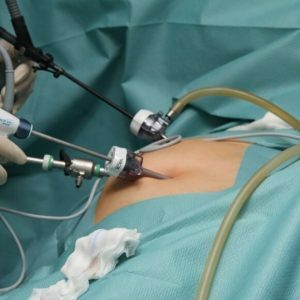 The basic and most effective method is the radical surgery .After the access is created, the blood vessels are ligated and the nephrectomy is performed - removal of the affected kidney with a malignant tumor and surrounding tissue.At the next stage, lymphadenectomy is performed - excision of regional lymph nodes.During the operation, the question of the preservation or resection of the adrenal gland is addressed.
The basic and most effective method is the radical surgery .After the access is created, the blood vessels are ligated and the nephrectomy is performed - removal of the affected kidney with a malignant tumor and surrounding tissue.At the next stage, lymphadenectomy is performed - excision of regional lymph nodes.During the operation, the question of the preservation or resection of the adrenal gland is addressed.
Important: since 1990, many clinics have begun nephrectomy with a laparoscopic method.According to clinical studies, the frequency of relapse after such intervention is much lower.
Chemotherapy is shown before and after surgery.It should be noted that this technique is ineffective in renal cell carcinoma of the neoplasm.
Some pharmacological agents used in chemotherapy:
- Vinblastine;
- Methotrexate;
- Sutent;
- Gemcitabine.
Important : on IV stage, Nexavar is prescribed, which prevents the appearance of new blood vessels in the lesion.Thanks to this, the food stops, and, consequently, the further growth of the tumor.
Radiotherapy refers to palliative methods of measures.The technique allows to somewhat ease the patient's condition and improve the quality of life in kidney cancer.It is indicated in the presence of secondary foci in the bone tissue to reduce the intensity of pain.Course radiotherapy lasts from 1 to 2 weeks( 5 or 10 procedures).
The task of immune therapy is the destruction of cancer cells and lysis of the neoplasm.The patient receives preparations of interleukin-2 and interferon-alpha-2a.Their combination allows you to achieve maximum therapeutic effect.
Hormone therapy involves the appointment of a patient with Tamoxifen or Medroxyprogesterone, which slows the growth of the tumor due to cytotoxic effects.
Note: folk medicine recommends the use of infusions and decoctions of the leaves of elderberry, mint and plantain, chamomile and tansy flowers to cleanse the body of toxins and decay products of the tumor.
Prognosis for renal carcinoma
Prognosis directly depends on the type and stage of kidney cancer, as well as on the presence or absence of secondary foci in remote organs.
Important: , single lung metastases in some cases tend to spontaneously regress.This circumstance significantly increases the chances of a complete cure!
If the disease is detected in a timely manner( at stage I) and adequate complex treatment is performed, the 5-year survival rate of patients reaches 90%.
At the II stage it is much lower - from 67 to 75%.
The five-year survival rate for diagnosing in Stage III, unfortunately, is no more than 65%.
Least optimistic forecast for the IV stage.Metastasis practically does not leave a chance of recovery.If the lymph nodes are affected by the tumor process and there are distant foci, then 5-year survival is usually within 10-40%.
Important: thanks to the latest treatments The 10-year survival rate for kidney cancer is currently reaching an average of 43%.
How to prevent kidney cancer?
The most important measures for the prevention of kidney cancer:
- weight control( getting rid of excess kilograms);
- Tobacco refusal( treatment of nicotine addiction);
- correction of the diet( should prefer vegetable food, rich in fiber);
- increase in overall immunity.
When detecting benign kidney tumors, their timely and adequate treatment is necessary in order to avoid probable malignancy.
Chumachenko Olga, medical reviewer


